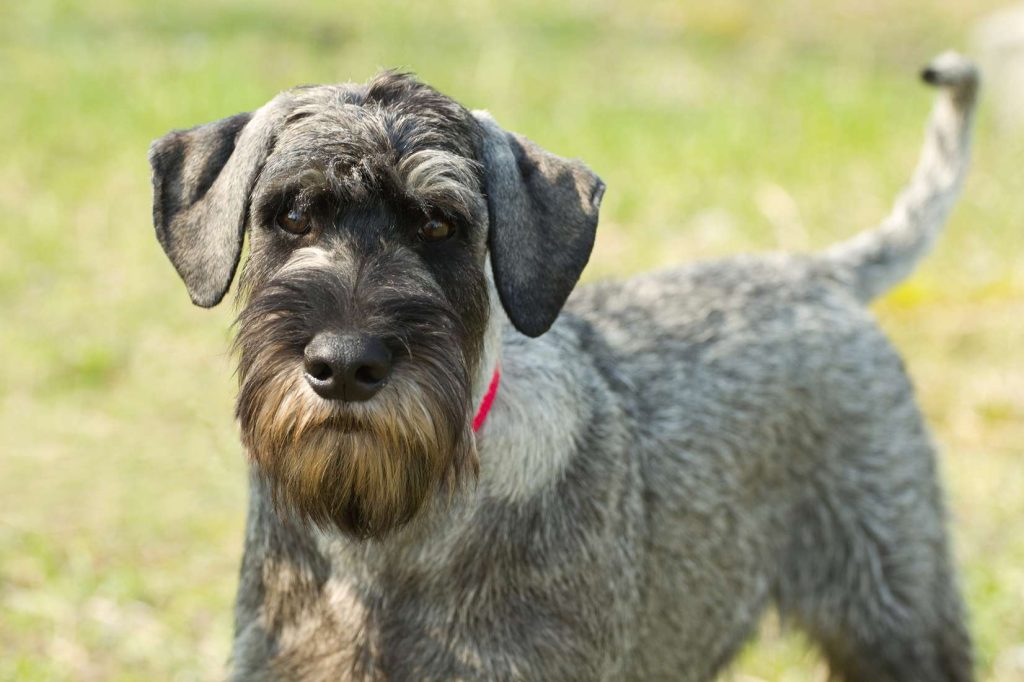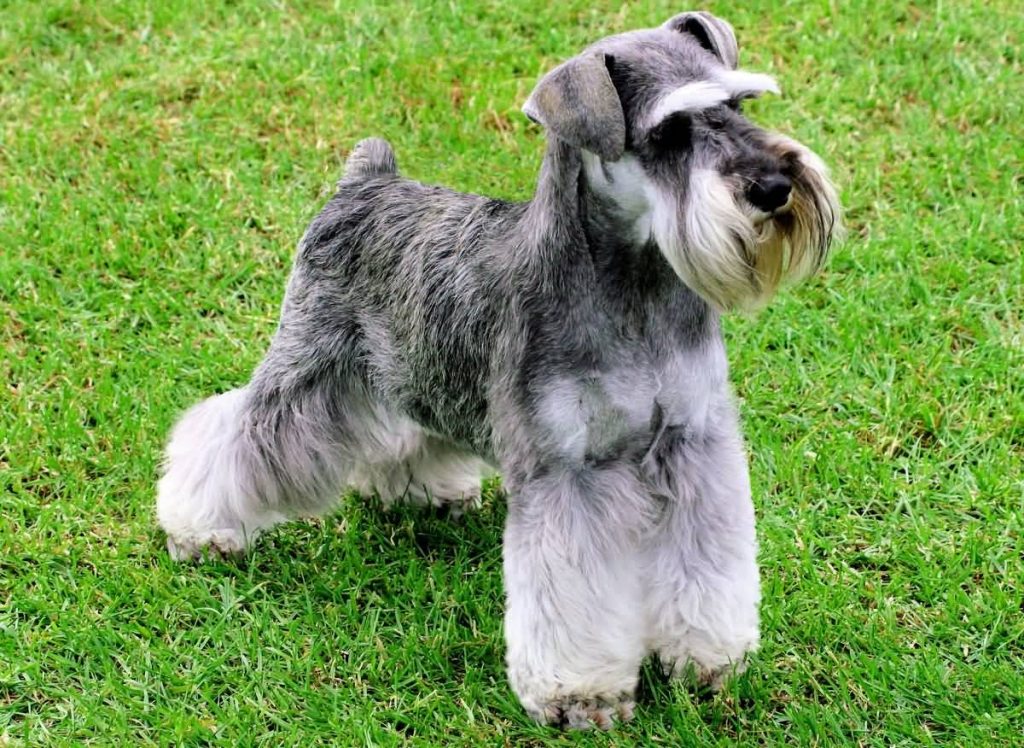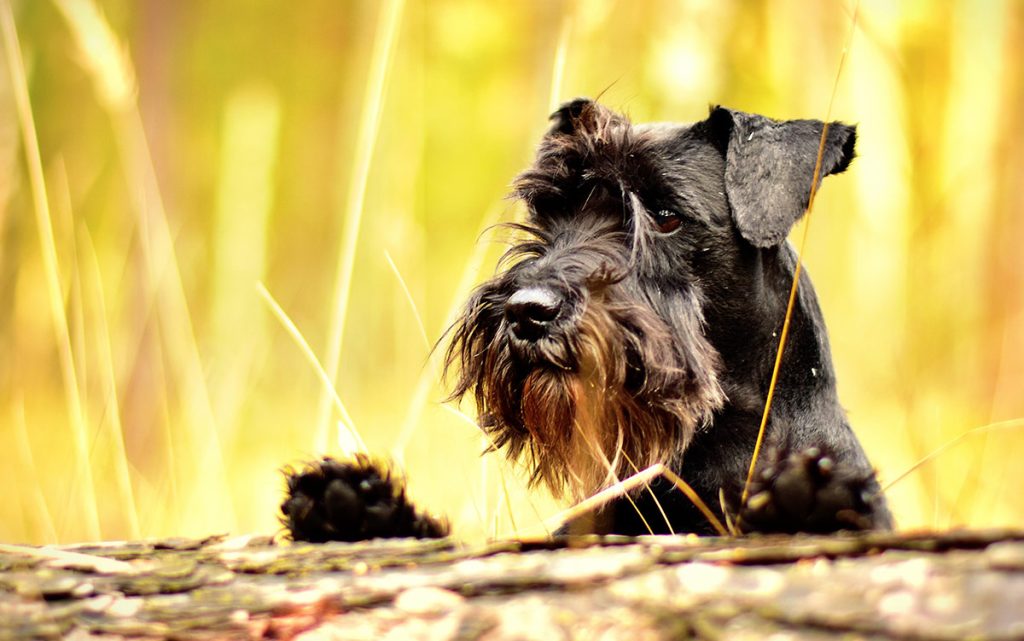The Schnauzer’s signature short, stubby tail is an iconic breed trait. But why is that tail so short? Is it natural or docked? This article will cover everything Schnauzer owners need to know about the breed’s characteristic stub tail including docking practices, risks and benefits, and what to expect with their tail as a puppy and adult dog.
Are Schnauzers Born with Short Tails?
No, Schnauzer puppies are actually born with normal long tails just like other breeds. The short bobbed tail commonly seen is achieved through intentional docking of the tail shortly after birth.
Schnauzer tails are docked when puppies are 3-5 days old by either surgical amputation or banding to cut off blood flow. Docking removes a major portion of the tail, leaving just 1-2 joints remaining.
At What Age is a Schnauzer Tail Docked?
Veterinarians or breeders dock Schnauzer tails when the puppies are only 3-5 days old. Tails are docked early before nerves have fully formed in the appendage.
Docking at this neonatal age is believed to reduce sensation and trauma since pain perception pathways are not totally developed. Docking older puppies with mature neurological connections in the tail would cause significant pain and stress.

What Are the Benefits of Schnauzer Tail Docking?
Proponents of tail docking cite several benefits of the practice for the Schnauzer breed:
- Prevents tail injuries as an adult since the stub has less risk of damage. Schnauzers are working, active dogs.
- Avoids spinal problems that can result from chronic tail injuries.
- Reduces chances of hematomas, breaks, and other tail trauma from enthusiastic tail wagging. Their tails can hit solid objects easily.
- Provides a neat, uniform, breed-standard look in the show ring and for owners seeking traditional style.
- Adheres to historic tradition of docking working and hunting breeds to avoid snagging tails in brush.
- Limits infection and disease risks of damaged tail tips.
However, research has challenged if docking truly avoids enough injuries to justify routine practice.

What Are the Risks of Schnauzer Tail Docking?
- Pain and stress, even done at a very young neonatal age.
- Infection at the surgery site in rare cases. Proper sterile technique minimizes this.
- Incorrect docking length or location outside breed ideal. Affects dog’s balance and communication.
- Neuromas or scar tissue nerve bundles that lead to chronic pain at the amputation site.
- Increased fear and anxiety long-term as docking may impact neurological development.
- Owner dislike of the look on a companion dog not being shown.
Overall the limited risks of tail docking seem lower than potential injury risks per supporters. But critics argue docking causes unnecessary distress and trauma.

Does a Schnauzer Tail Grow Back After Docking?
No, a Schnauzer’s tail does not grow back once docked early in life. The process surgically removes a section of bone, blood vessels, and nerves that will not regenerate.
However, if by some accident a tail was damaged and partially amputated later in life, the remaining nerves and tissue at the break point could potentially form a partial regrowth of cartilage called a “proud tail”. But this differs from regeneration after neonatal docking.
Caring for a Schnauzer’s Tail
To care for a Schnauzer’s shortened tail:
- Keep the docked tail dry and clean, especially right after surgery. Monitor for infection.
- Allow healing before overly energetic play that could hit the tender tail area.
- Learn to “read” your Schnauzer’s tail and butt wiggles since a stub offers limited communication.
- Handle the nub gently and discourage biting or chewing at bandaged tails.
- Watch for signs of neuromas like sensitivity or pain near the dock site.
- Consider use of a partial tail guard for working Schnauzers at risk of further tail damage on the job.
While a short tail reduces risk for the active breed, owners should still monitor for any discomfort and learn their dog’s unique stump signs.

Frequently Asked Questions
Are tail docking bans affecting Schnauzer tails?
Yes, some areas ban docking unless medically necessary. But many show and breed standards still call for a docked Schnauzer tail. Owners may travel to permit docking.
Do Schnauzer tails curl?
Most do not curl as adults due to docking. But some undocked Schnauzers carry a gene that leads to curly tails if allowed to grow naturally.
Is an undocked Schnauzer tail defect?
No, a natural tail is not a flaw. But docking is expected in the breed. Natural tails should not be penalized if due to location bans on cosmetic docking.

Does tail docking really prevent injury?
Proponents cite reduced risk of damage while working and in thick brush. But some research suggests docked dogs still sustain injuries at similar rates, just in different locations like hips and shoulders.
Do dogs use tails for balance?
Yes, tails provide counterbalance aid, especially during athletic activities. But dogs adapt without tails. Proper dock length in sporting breeds maintains balance.
The Takeaway
The Schnauzer’s iconic short tail is achieved through early puppyhood docking. This tradition remains integral to the breed standard but is controversial among some groups. Overall, Schnauzers adapt well to life with a stubby tail and owners can learn to interpret subtle communications from just a tail nub. With careful docking and monitoring, Schnauzers thrive without the majority of their long tails.


